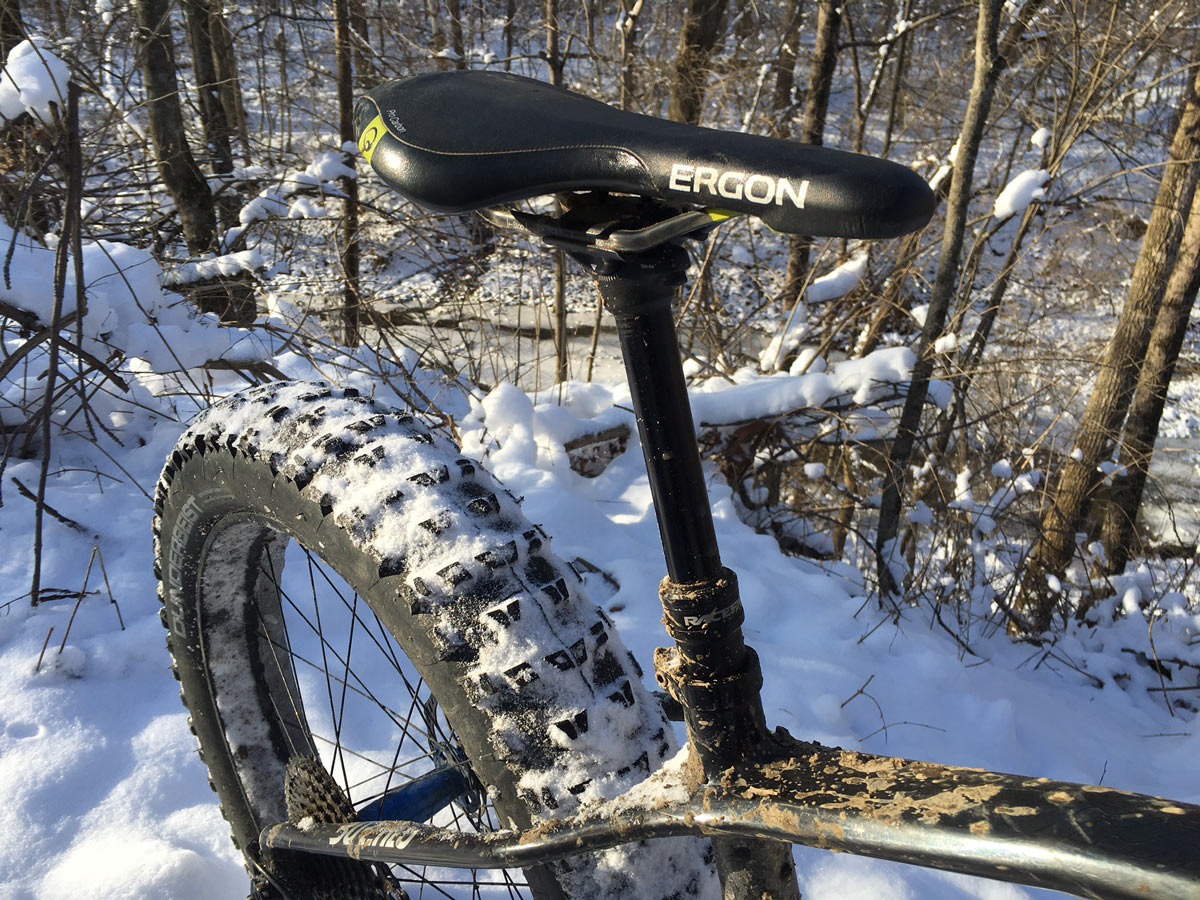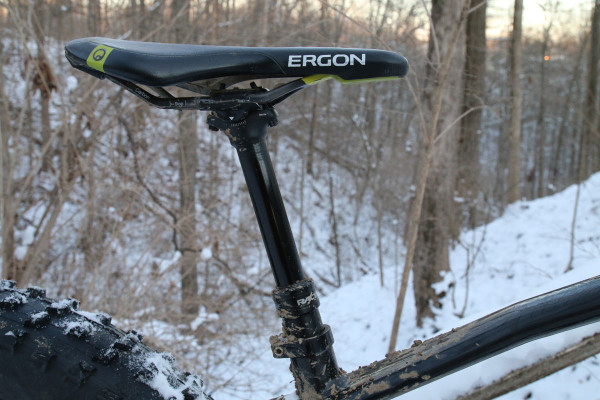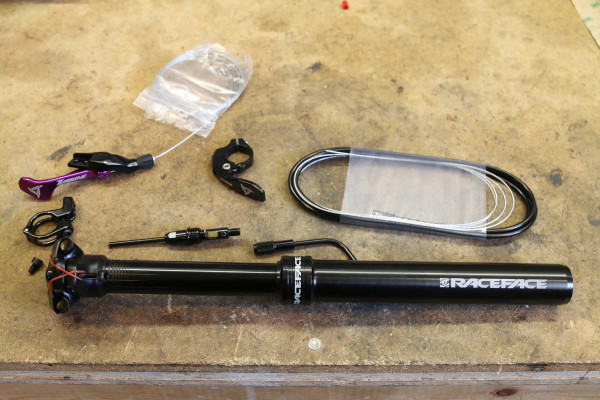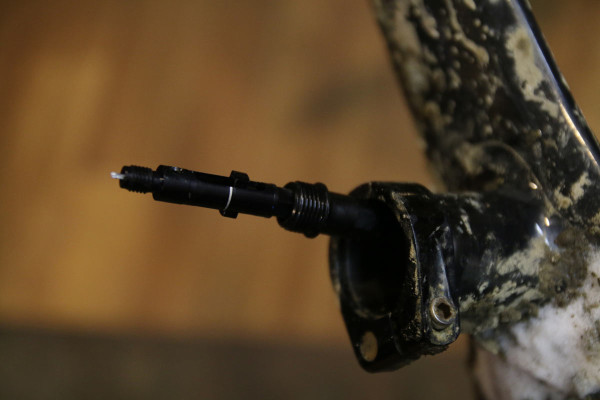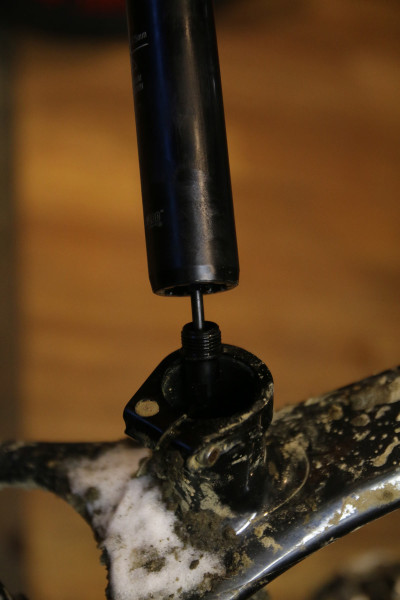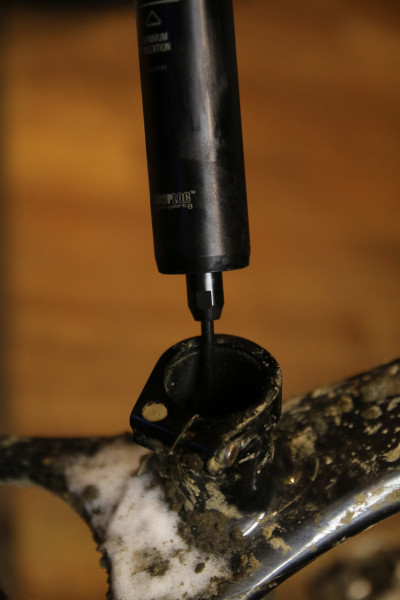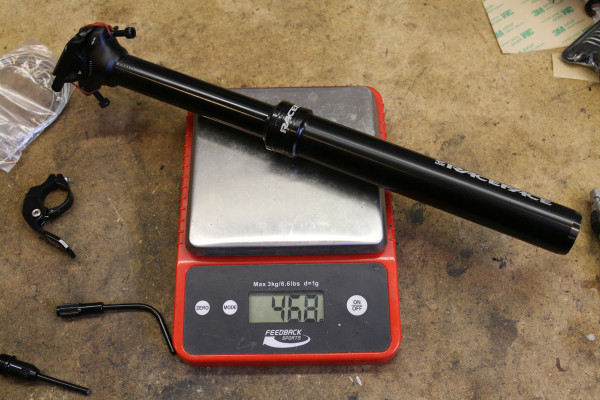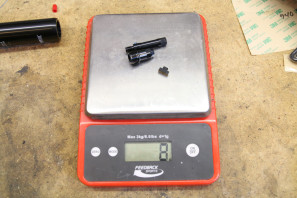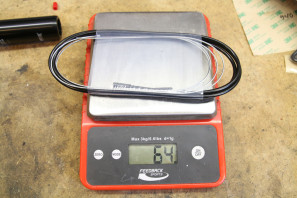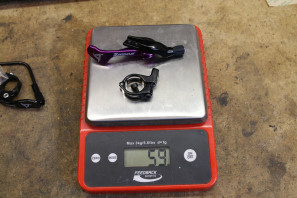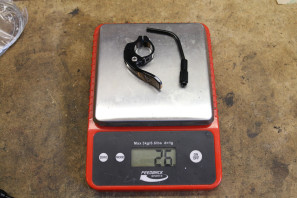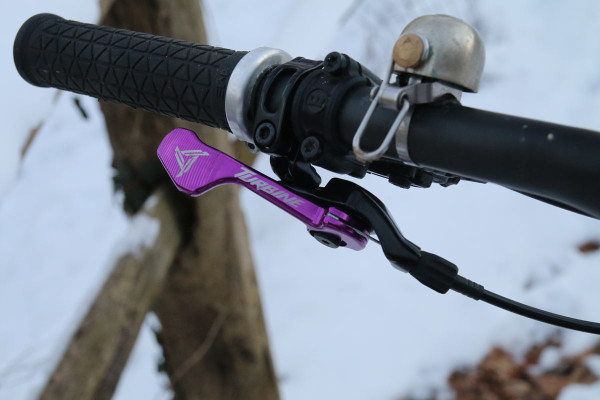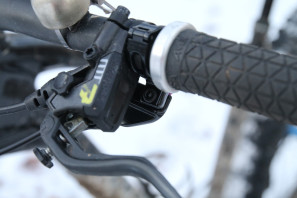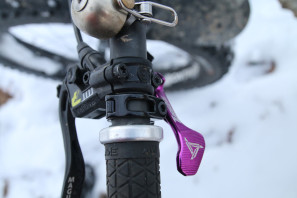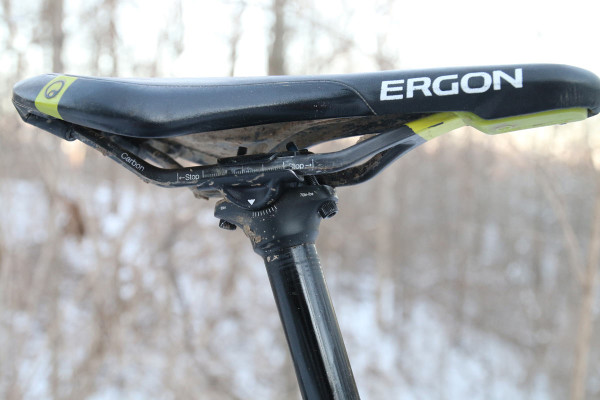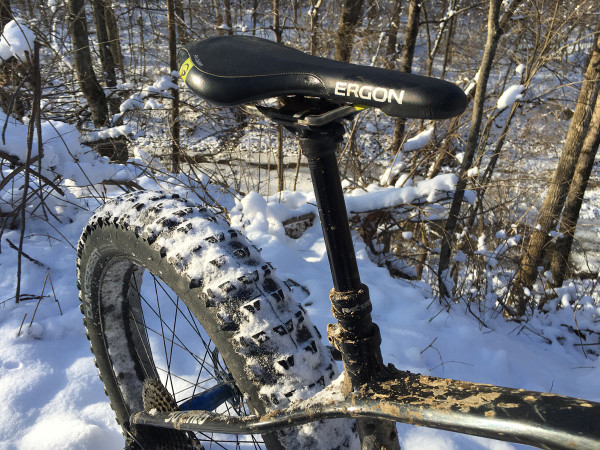Dropper posts have been around long enough that they’re now virtually standard equipment on many mountain bikes. But just because they’re prevalent, doesn’t mean they are all created equal. Unlike a suspension fork, the dropper post needs to be able to instantly lock into place and resist twisting – traits that often lead to mechanical issues. Because of that, when Race Face (and Easton) wanted to introduce a dropper, they didn’t reinvent the wheel seatpost. Instead, they sought the mechanical prowess of a relative newcomer to the mountain bike scene with 9point8. Thanks to their DropLoc technology, 9point8’s posts promised hydraulic feel with infinite mechanical actuation and above average durability. Exactly what you want from a dropper.
After licensing the technology, Race Face and Easton introduced nearly identical seat posts that would use 9point8’s technology, but be manufactured separately to 9point8. We just got our first sample of the new post, and so far it’s definitely worth a look…
Inside the box, you’ll find the dropper post, cable anchor assembly, cable and housing, plus the standard vertical lever remote. In this case we were also sent the 1x Hop-Up lever in purple ano, of course. The seatpost sells for $469 while the 1x lever adds another $60. Available in 30.9 and 31.6mm diameters, travel is offered in 100, 125, and 150mm increments. I’m testing the 125mm travel post in 31.6, which has a seat post length of 375mm. If you’re like me and have less seat post extension than many, you’ll also want to know that for the 125mm travel post, the minimum height is still 190mm to the center of the rails.
To make sure the small anchor isn’t lost in shipping, the cable anchor assembly ships with a piece of spare housing already installed. It’s important to note that this threads into the anchor. Otherwise you’ll be pulling on it to no avail. It’s in there pretty tight, so you might need to hold the housing with a pair of pliers or a vice.
Once the housing is routed through the frame, Race Face calls for 30mm of housing to poke out through the seat tube. Then they recommend cutting the end by the handlebar so that it’s 230mm from the head tube. This is so that when you push the seat post down into the seat tube, the extra housing has somewhere to go and won’t make the front end too long. Obviously this is a bit of a crap shoot as handlebar width and positioning will vary, but I found it to be pretty close.
Pro Tip: When routing your housing through the internal routing on many frames it can get hung up when it reaches the 90 degree bend at the bottom bracket. To make this transition as smooth as possible it helps to file down the end of the housing so there are no sharp ends to dig into the guide tube and get stuck. You can also give the housing a bit of a pre-bend to make it want to follow the curvature of the tube a little easier.
Once the shift housing is cut and run, it’s followed by threading the housing into the t-shaped anchor I mentioned earlier. Make sure the large threaded barrel is already over the housing. Then place the housing anchor in the cable anchor and thread it onto the housing (no housing end cap is used). Now route the cable, and use the two pinch bolts to lock it in place. When installed properly, the housing should be securely seated at both ends, and the top of the housing anchor should be lined up with the white line of the cable anchor. This may take a little wrangling, but isn’t that hard. Next the cable is cut from 0-2mm off the top. To install the cable into the dropper, first the cable anchor is held in place and the seatpost is rotated until hand tight. The next step is threading the large barrel into the seat post over the cable anchor and you’re set. Lock the seat post into the seat tube and you’re ready to ride.
The only adjustment comes in the form of the seat post return spring which is adjusted via schrader valve in the seat post head. Stock pressure is 30psi, but can be adjusted from 20-40psi.
On the scale, the Turbine seems to be pretty average, with a complete weight of 566g with the standard remote and uncut cable and housing. The 1x remote adds 33g due to the bigger lever assembly, but it is so worth it.
Assuming you have a 1x drivetrain, the 1x Hop-Up lever makes great use of the new-found space. Race Face didn’t invent the 1x dropper lever, but theirs is as good as any. This is what dropper remotes were meant to be – easy to find and press even when you’re going full speed into that tricky descent. Offered in black, blue, green, red, orange, and yes, purple, it adds a few style points as well. The lever provides two horizontal mounting positions to help dial in your fit as well plus its own barrel adjuster to take up slack in the cable. To go along with the infinite adjust within the seatpost stroke, just depress the lever, position the saddle and let go.
The seatpost head is a typical twin bolt, zero offset design that is oval carbon rail friendly. I found there to be a lot of Loctite on the bolts which made it a bit tedious to tighten them down the first time and also noticed a bit of aluminum shavings on the first installation. This may have been the reason for the saddle to slip back the first time out, but after re-tightening it, it hasn’t been an issue. Just make sure to check the torque after the first ride.
Out on the trail, so far the post delivered as promised – hydraulic feel without any of the fuss. The full mechanical system made it a lot easier to route internally through the frame without needing to bleed it when it was done, but the post has a much more fluid feel than most mechanical options on the market. This is obviously due to the tech from 9point8, but it’s great to see it more readily available. Probably also due to the purely mechanical nature of the post, so far it has been flawless in below freezing fat biking conditions which I can’t say for some other posts I’ve used like the Reverb or KS LEV Integra which seem to hesitate, or just completely lock up in the cold. Race Face gives some advice to adjustments for extreme weather usage, but I haven’t needed to touch anything even with taking the bike from 67º in the house, out to 15ºf outside. At this point, only a premature failure could change my opinion on the Turbine Dropper, which is something we’ll definitely report back with, if so. But if all initial impressions turn out to be true, this is an excellent addition to the Dropper market.
